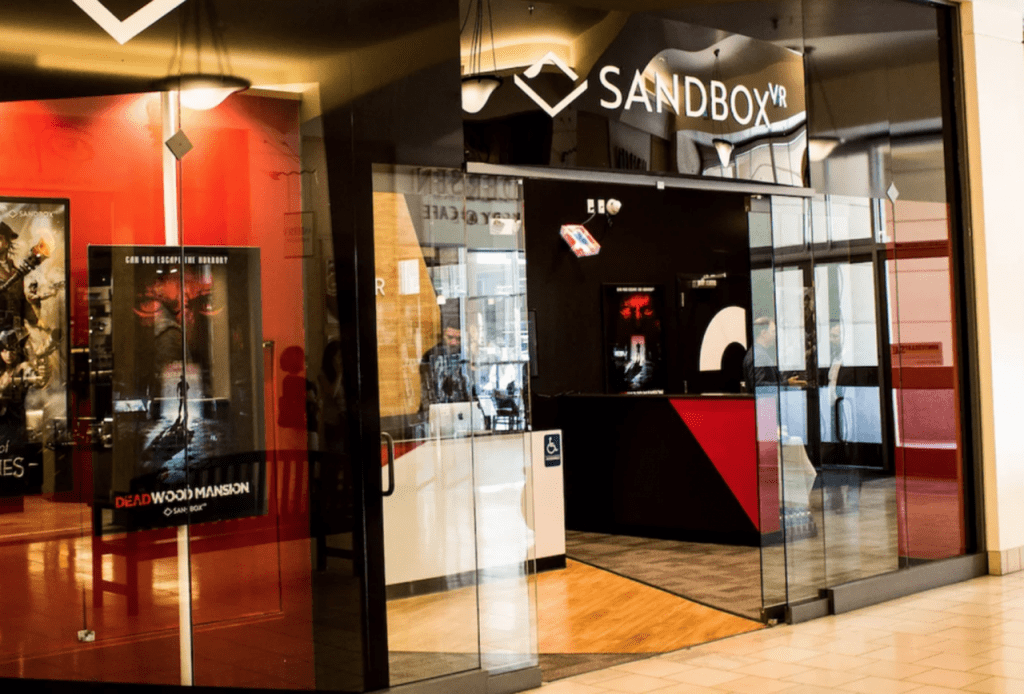
Last week I began my review of the top 20 Location-based VR trends and stories for 2019. This week I round out the list.

11. Sandbox VR – One of the biggest stories of 2019 was Sandbox VR raising over US$ 70 million from top-tier venture capital firm Andreesen Horowitz. I had just gotten back from CES in Las Vegas and spoke with Tipatat, co-founder of the VR Fund, who told me there was no way a VC would invest in location-based VR. After news of the deal broke, I spoke to several other VC’s and asked them what they thought about the deal, and they all just shrugged their shoulders. Many hoped it would spur on additional investment, but it hasn’t yet. Meanwhile, Sandbox has announced a slew of new openings, including San Francisco, Chicago, San Diego and more.

12. Antilatency – After several years of showing incremental improvements to their free-roam tracking solution, Antilatency finally released its full SDK and entered full production. The inexpensive, scalable and flexible inside-out system could prove to be a game-changer for anyone looking to do full-body tracking in a large-scale space. I visited their development studio in Voronezh, Russia this past fall, and was impressed with the performance and elegant design of their system. I expect to see it popping up in retail operations in 2020.
[yotuwp type=”videos” id=”okCYroqsLik” title=”off” description=”off” player=”showinfo=0&iv_load_policy=3″ styling=”hover_icon=play-2″]
13. Gold and Mace – One of the game highlights of the year was the release of Gold and Mace from Boxblaster. A new entrant in the multiplayer arcade segment, this game has up to 4-players catching, clubbing, spearing and tearing limbs from cartoon knights flying through a medieval landscape. The gameplay is as fun as it gets and appeals to all ages. Boxblaster has a breakout IAAPA show and seems to be a legitimate competitor in the segment created and dominated by Hologate.
[yotuwp type=”videos” id=”gCCfX_h03f8″ title=”off” description=”off” player=”showinfo=0&iv_load_policy=3″ styling=”hover_icon=play-2″]
14. The Another World Trailer – One thing I write about a lot is how hard it is to market VR to consumers. Another World, a startup out of Vienna and Moscow, burst onto the scene this year with a video trailer worthy of the best of Hollywood blockbusters. I have shown it at conferences, and the audience invariably applauds. Another World has a high-end free roam experience in Moscow where they are testing new content. When it’s done, if their content lives up to the trailer, expect great things from them.
15. Kids VR – 2019 was the year that VR attractions for the younger audiences burst onto the scene. Virtual Rabbids from LAI, Anteater from Spree Interactive, and Centertec in Philadelphia are great examples of virtual reality engaging and entertaining the little ones. Now that operators realize VR isn’t just for adults, expect to see more competition in this area in 2020 and beyond.
16. Inside Out Tracking – 2019 was the year that inside-out tracking became real, where you don’t need external cameras because all the tracking tech is embedded into the headset. Zero Latency’s adoption of Microsoft’s Windows Mixed Reality platform was the first major provider to legitimize the tech. Oculus Quest brought it to the mainstream, and Pico (with their just-released Neo 2), Antilatency, and others are getting into the act. Expect the downward pricing pressure on tracking technology to continue into 2020.
17. Mobile Headsets – The downfall of the first mobile headsets, like the Google Daydream, Oculus Go, and Samsung Gear VR, were their lack of a 6 DOF tracking system. The new chipsets Snapdragon 845 chipsets from Qualcomm are enabling much better performance from all-in-one devices that don’t require a PC. Expect the performance of these mobile headsets to continue to grow, and when combined with inside out tracking, accelerate the downward pricing pressure on multiplayer VR solutions.

18. IAAPA Embraces VR – At IAAPA 2018, there were zero education programs on VR while over 60 exhibitors were on display featuring the technology. 2019 finally saw the IAAPA organization get with the program, with two panel discussions (one of which featured yours truly) and a VR tour highlighting 10 fortunate exhibitors. IAAPA Europe got into the act, offering me a slot on a panel about immersive entertainment. New management has taken over IAAPA, so we will see where it heads this year.
19. Unattended VR – I cannot emphasize the importance of this enough, VR need not have an attendant. LAI’s Virtual Rabbids, VRsenal’s Beat Saber and now Unis Ultra Moto VR are all designed to operate unattended. It’s not rocket science, developers just need to believe that it’s possible and develop better operating systems. The first company that makes a 4-player VR system that works without an attendant will knock Hologate from their throne, yet I have spoken to several, and none believe it is possible. Who’s going to step up?
20. Nomadic VR – One of the multi-sensory VR attraction providers, Nomadic struggled in 2019. Their first location in Orlando closed and they failed to open anything else. Their CEO and founder Doug Griffin was pushed out by new investors, who hired Cliff Plumer, former CEO of The VOID to turn things around. Nomadic quickly announced popup locations using the Vader Immortal Lightsaber Dojo game to open in 6 malls across America timed with the launch of Star Wars: The Rise of Skywalker. It’ll be interesting to see how Nomadic tweaks its strategy to find a place in the increasingly crowded LBVR landscape.
I am sure that I missed highlights. What were yours? Just reply to this email, or post them on a comment on my website here. I will collate them all and feature them in a future post. And if you want more info on anything in this post, just reply with “more info” in the subject and I will get back to you.